How to Dry Herbs at Home: The 3 Best Ways to Preserve Color, Freshness, and Aroma
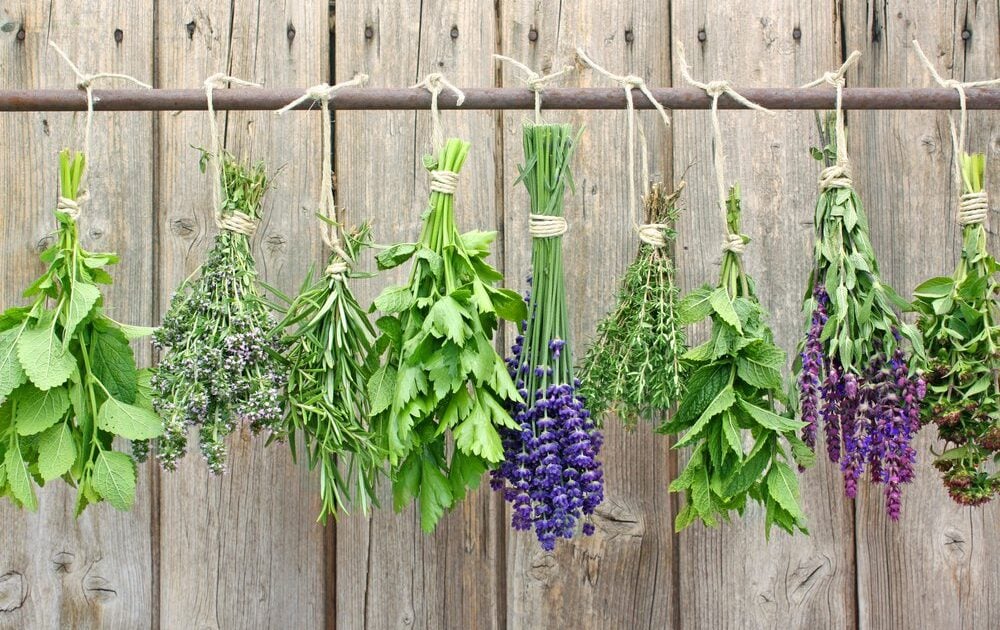
If you’re considering how to dry herbs at home — or even whether it’s worth the effort — as a pro. Andrew Carmellini, the award-winning chef at New York City’s Locanda Verde, used to cook at home with store-bought dried herbs.
“I think I went through six brands before I gave up,” he writes in his cookbook, “Urban Italian.”
“I couldn’t believe how flavorless they were.”
Carmellini urges home cooks to dry herbs at home — and for good reason. Not only does this preserve the flavor of the herbs, but it ensures that you’re getting the best quality.
When you’re beginning to learn how to dry herbs, the first step is selecting them. Opt for locally grown organic herbs, or — better yet — herbs from your very own garden.
If you are harvesting your own organically herbs, there’s no real need to wash them, especially given that some of the oils may be lost when rinsing; just be sure to shake them well in case there are any insects attached, and if they really are dirty, by all means, give them a little rinse. Harvest them in the mid-morning, when the dew has dried, but before the sun has burned off the essential oils in the herbs.
If you are using fresh store-bought herbs, wash them carefully and dry them completely; first, spin them dry in a salad spinner, and then pat off any remaining moisture with a dishtowel.
Next, it’s time to choose a drying method. Choose the one that works the best for the herbs you want to use (and the time you have at your disposal), and soon, you’ll have a myriad of home-dried herbs to cook with.
How to Air Dry Herbs
Air-drying herbs is one of the easiest ways to dry herbs at home. It can take a while, but you end up with a purer, cleaner flavor than with other methods.
You can either air-dry herbs in bundles, which will take longer, or spread them out over racks, which will take up more space but will ultimately dry your herbs faster, and with less chance that they rot or mold before being completely dried.
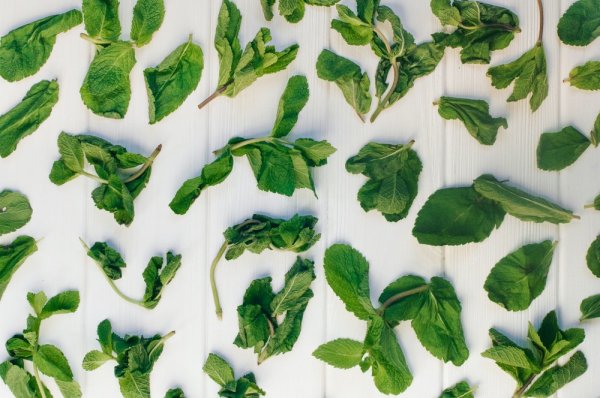
To air-dry herbs
- Spread individual leaves or sprigs of herbs on a rack or a baking tray lined with cheesecloth. If you’re going to be drying herbs using this method frequently, you may wish to make a drying screen out of mesh, like mosquito screening, mounted on a wooden frame.
- Place in a warm spot out of direct sunlight.
- Turn the leaves regularly, about every 12 hours or so.
- This method should dry the herbs in 2-3 days. The herbs are dry when they have the texture of cornflakes and crumble when pressed.
Air-drying herbs in bundles may take a bit more time – up to two weeks – but the drying bundles can be quite beautiful, and dried herb bundles make for easy storage. Once the herbs are dried, you can hang them in your kitchen and use them as needed.

To air-dry herbs in bundles
- Tie small bunches of herbs into bundles with twine or twist-ties (which are easier to tighten as the bunches shrink down). Be sure to keep the bundles small, to avoid rot or mold.
- Hang the bundles upside down in a warm spot out of direct sunlight.
- Gently wrap the bundles in muslin or paper bags poked with several holes, to keep out dust.
- When the bundles are dry, remove the muslin or paper bags.
No matter which method you choose for air-drying herbs, be sure to place the herbs in a well-ventilated place out of direct sunlight for optimal drying. Humidity can cause the herbs to spoil and mold to develop, so if you live in a very humid area, you may wish to opt for a different drying technique.
Air-drying herbs is ideal for herbs with larger leaves, like mint, basil, oregano, and marjoram.
Drying Herbs in the Oven
Oven-drying herbs is a much quicker method than air-drying, though you’ll have to be careful not to burn the herbs, and you may have to experiment with your oven to find the ideal technique.
- Strip the herbs from their stalks, and lay them out on an oven rack covered with a layer of muslin.
- Set the oven on the lowest possible setting, and place the rack in the oven. Ideally, the herbs should not be at more than 100 degrees F; you may need to preheat the oven, then turn it off and leave just the light on to achieve such a low temperature. Use an oven thermometer to help you find the right technique with your oven.
- Leave the door ajar, so that excess moisture can escape and the oven does not get too hot.
- Dry the leaves for 30 minutes, then turn them over once. Continue drying for an additional 30 minutes.
- After a total of one hour, turn off the oven and allow the herbs to cool in the oven.
This method is best suited to robust herbs, such as sage, mint, rosemary, and thyme.
The Secret to Drying Herbs Fast (Use the Microwave!)
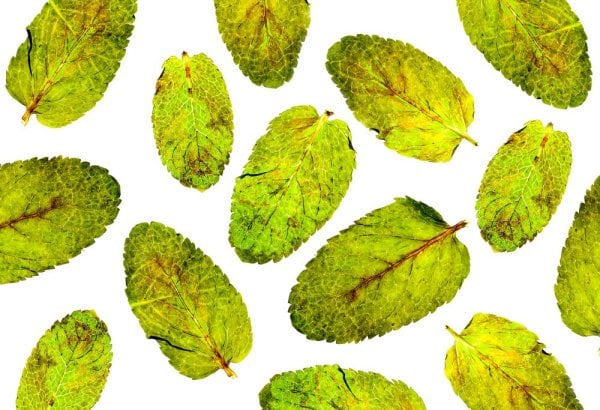
Dried mint leaves image via Shutterstock
Drying herbs may seem like an exercise in patience, but if you’re interested in how to dry herbs more quickly, there is method that you can use when you’re strapped for time: microwaving.
The microwave specifically targets water, drying your herbs faster than any other method and keeping them greener and fresher tasting than other dried herbs.
- Separate the leaves of the herbs from the stems.
- Place a single layer of herbs on a paper towel on a microwave-safe plate. Cover with a second paper towel.
- Microwave on high for 1 minute. Be sure to keep a close eye on the herbs, and stop the microwave if you smell the herbs burning.
- If the herbs are not quite dry yet, continue drying them at 30-second intervals. Depending on the herb and the moisture content, this method can take anywhere from a minute to ten minutes.
This method works well with small quantities of more delicate herbs, such as chives and cilantro. It can, however, work with any herb you choose.
How to Store Dried Herbs
Once you have dried your herbs, they are ready to be used right away, but more often than not, you’ll want to store the herbs for later.
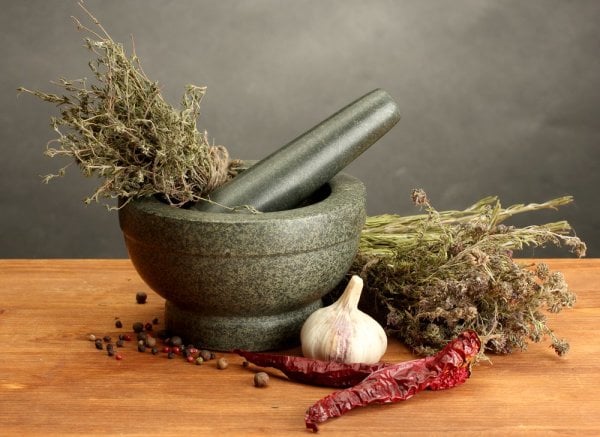
Mortar and pestle image via Shutterstock
Crumble the dried herbs with clean fingers or crush them in a mortar and pestle, discarding any hard stems that you may find. You can also leave some herbs whole, which helps them retain their aromatic oils better.
Place the herbs into small, airtight containers, and keep in a cool, dark place like a cupboard. Your herbs will keep for between six and 12 months, but the sooner you use them, the more flavor they will have.
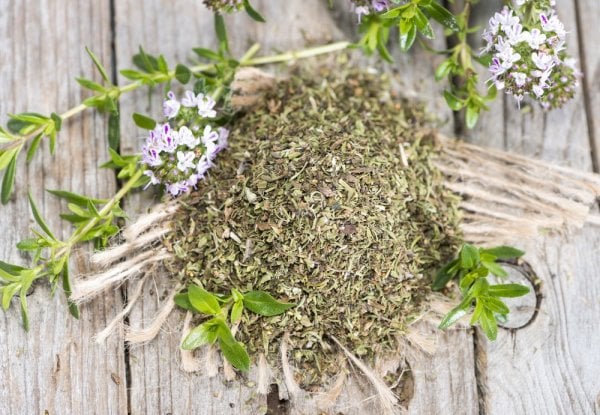
Dried winter savory image via Shutterstock
Use dried herbs in any of your favorite dishes, but be aware: drying herbs concentrates their flavors, so you’ll need far less of a dried herb than you will fresh. Also, whereas fresh herbs should always be added to dishes at the very last minute, dried herbs can be added a bit earlier in the recipe, to allow their flavors to develop within the dish.
You can dry any herbs you like, but some retain their flavor better if they are frozen instead. These delicate herbs include basil, chives, cilantro, parsley, and tarragon.
To freeze these herbs, chop them finely and place them into an ice cube tray. Cover completely with extra-virgin olive oil, and freeze. When the cubes are completely solid, place them into a plastic bag, and keep in the freezer until ready to use.
You might also want to consider continuing to grow herbs and vegetables inside during colder months. Not to mention it will help supplement your grocery shopping while keeping you preoccupied this year during peak covid. Check out some of our favorite indoor growing products for inspiration.
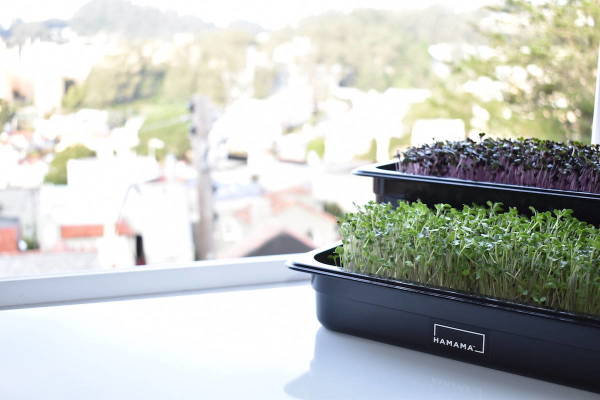
Growing microgreens with Hamama is as simple as refill and repeat! Microgreens are the younger versions of leafy greens, vegetables, and herbs and can be harvested in just 2 weeks!

Click and Grow’s self-watering and self-lit indoor gardening kit is so user friendly that anybody can grow veggies and herbs year round. For those who want to grow indoors and need to save their counterspace, consider The Smart Garden 27.
Related on Organic Authority
The 5 Medicinal Herbs that Will Give You Superpowers (Almost!)
This is What Happens to Your Body When You Take These Adaptogenic Herbs
7 Best Herbs for Skin Health
Drying herbs image via Shutterstock

